Fox and Jackson Jointly View Their Venice Bridge by Les Spindle | July 1, 2013
 Pacific Resident Theatre’s production of the 1956 Arthur Miller classic A View From the Bridge brings together two of the Venice company’s veteran theater artists, whose simpatico relationship has grown richer over the past 12 years. Longtime artistic director Marilyn Fox and PRT member Dana Jackson (listed on the PRT site under her Equity name, Dana Dewes), who joined the 28-year-old company in 2001, collaborate as co-directors for the hard-hitting Miller drama.
Pacific Resident Theatre’s production of the 1956 Arthur Miller classic A View From the Bridge brings together two of the Venice company’s veteran theater artists, whose simpatico relationship has grown richer over the past 12 years. Longtime artistic director Marilyn Fox and PRT member Dana Jackson (listed on the PRT site under her Equity name, Dana Dewes), who joined the 28-year-old company in 2001, collaborate as co-directors for the hard-hitting Miller drama.
This play combines the style of the celebratedAmerican scribe’s legendary domestic dramas, such as Death of a Salesman and All My Sons, with a poetic veneer of Greek tragedy. Fox notes that Miller’s works have seldom been produced at PRT: “We did a really significant [2000] workshop production of All My Sons, with Nancy Linehan Charles. I think the only other Miller play we’ve done was Death of a Salesman [in 2006], which started as a workshop but eventually opened as a mainstage show, with Richard Fancy as Willy.
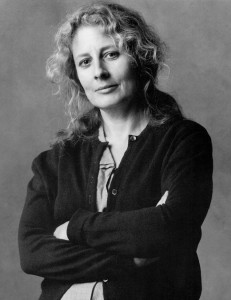 However, as Fox explains, “The mission statement of our theater includes less-produced plays of great writers. So it would be more typical for us to produce this play than, say, Death of a Salesman, which was a workshop production originally. One of the things that Dana and I have been talking about is how his plays are political plays. He seems to be discussing a kind of situation where the common man is usually in a situation where he is supposed to be more heroic than any average person could be.”
However, as Fox explains, “The mission statement of our theater includes less-produced plays of great writers. So it would be more typical for us to produce this play than, say, Death of a Salesman, which was a workshop production originally. One of the things that Dana and I have been talking about is how his plays are political plays. He seems to be discussing a kind of situation where the common man is usually in a situation where he is supposed to be more heroic than any average person could be.”
Slow Crossing
Bridge took a while to join the ranks of the playwright’s most famous works. For several years following its brief New York premiere, the play was not produced in the US. It initially appeared as a verse-driven one-act play in 1955, on Broadway. Miller subsequently revised and expanded it to its full-length version, staged in London by Peter Brook. In 1965, an Off-Broadway rendition of the full-length version, assistant-directed and stage-managed by Dustin Hoffman, appeared.
The play’s profile in the Miller canon grew substantially in three subsequent Broadway productions — in 1983 (starring Tony Lo Bianco), in 1997 (directed by Michael Mayer, starring Anthony LaPaglia, Allison Janney, and Brittany Murphy; and winning a Best Revival Tony) and in 2009 (starring Liev Schreiber and Scarlett Johansson). Anthony Caldarella’s staging at West Hollywood’s Marilyn Monroe Theatre in 1995 featured Burt Young, Carmen Argenziano and Susan Giosa.
Miller’s working-class drama, framed within the devices of a Narrator and a Greek-style chorus, follows the crises that erupt in an Italian-American neighborhood near the Brooklyn Bridge in the 1950s. The doomed protagonist, patriarch Eddie Carbone (played by Vince Melocchi) develops an ostensibly protective relationship with his orphaned niece Catherine (Lisa Cirincione). When some illegal Italian immigrants come into town, and the younger man Rodolpho (Jeff Lorch) becomes attracted to Catherine and eventually engaged to her, Eddie faces a dilemma. Should he report the two immigrants to the law, or should he follow the will of the community, which is sympathetic to refugees? As in The Crucible (a parable of the U.S. 1950s McCarthy blacklisting) and All My Sons (exploring a military-related scandal), Miller mixes the personal and the political. His plays are sometimes compared to the works of Norwegian playwright Henrik Ibsen.
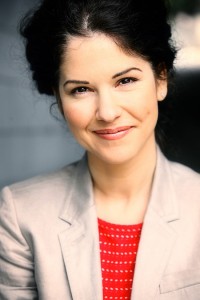 Fox describes the typical Miller themes: “Society puts a stigma on a man, to be perfect in some way, either being the biggest airplane parts manufacturer in town [All My Sons], or as big a success as his brother [Death of a Salesman]. Or in some way it’s about what manhood is in our society. Miller creates a tragic situation that no human being could weather but is supposed to anyway. I think there’s a comment that he’s making over and over in his greatest plays about what we are told as opposed to what we are. But he finds the beauty and the heroism in that — in people who are dealing with a belief for an ideal, a principle.”
Fox describes the typical Miller themes: “Society puts a stigma on a man, to be perfect in some way, either being the biggest airplane parts manufacturer in town [All My Sons], or as big a success as his brother [Death of a Salesman]. Or in some way it’s about what manhood is in our society. Miller creates a tragic situation that no human being could weather but is supposed to anyway. I think there’s a comment that he’s making over and over in his greatest plays about what we are told as opposed to what we are. But he finds the beauty and the heroism in that — in people who are dealing with a belief for an ideal, a principle.”
Jackson adds, “According to the law, what Eddie does in the play is the right thing, but according to his culture — his neighborhood — it’s wrong.” She believes the challenges of staging this work include “the narrator, which completely breaks the fourth wall. There’s also an exterior and interior scenes, and the play is told in a flashback. There are things you have to contend with in the storytelling. The narrator and chorus are not typical in Miller’s plays.” She looks forward to meeting the challenges of the piece: “We have a wonderful cast. It’s been a very harmonious rehearsal process, and with Vince, you couldn’t have a better guy at the top of the play.”
Fox discusses the reasons she wanted to do Bridge. “Miller’s plays are very moving to me, and I think for anybody who is a baby boomer. I know Miller was really affected by the Depression. I feel his whole point of view is American. So much comes out of the American political situation- — the Depression, the wars, the Jewish family, there are a lot of things I think that resonate for all audiences. His plays are so human.”
Fox continues, “We actually have some Italians, and Dana is Italian.” Jackson, who also is an actor at PRT, singlehandedly helmed the PRT production of Nora (filmmaker Ingmar Bergman’s adaptation if Ibsen’s A Doll’s House) last year. She has previously been billed as associate director when collaborating with Fox. Even so, Fox emphasizes that this isn’t the first time they have truly shared directing duties: “When we did Barrie: Back to Back [in 2011] we teamed up as co-directors on the second Barrie piece, The Old Lady Shows Her Medals.” This was a dual bill of short works by J.M. Barrie (Peter Pan).
Fox points out that directorial collaborations are a long-standing tradition at PRT: “Stephanie Shroyer who was the artistic director before me, and [the late] Gar Campbell and myself, teamed up all the time. Gar was really a teacher to all of us. Dana and I have been working closely together, and Gar had a lot to do with developing her abilities.”
Two by Two
What are the challenges in serving as co-directors, and what methods are used? Fox explains, “We’ve been at almost every rehearsal unless one of us hasn’t been able to do so. We’ve picked up rehearsals for each other but we’ve mostly been working together, though sometimes Dana’s doing more, sometimes I’m doing more. It depends on the schedule and the problem to resolve at the moment. But we have a very similar point of view, even if it’s a different way to get there.”
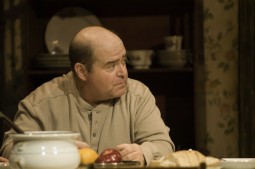 Jackson says that negotiations on points go smoothly, though she adds,”Marilyn is the artistic director. And it works out very well, because I am more than happy to oblige. Quite frankly, I’ve never seen her be wrong, while watching her work. It’s a very easygoing relationship. When learning directing here, I’ve had mentoring from both Gar and Marilyn.”
Jackson says that negotiations on points go smoothly, though she adds,”Marilyn is the artistic director. And it works out very well, because I am more than happy to oblige. Quite frankly, I’ve never seen her be wrong, while watching her work. It’s a very easygoing relationship. When learning directing here, I’ve had mentoring from both Gar and Marilyn.”
Fox is quick to add, “But Dana just directed Nora and she really took it on. I came in like I would for any play here and gave her some notes but that was totally her project.”
Jackson smiles and adds a qualifier, “Marilyn helped a lot. She did — and in many ways. She suggested me as the director for that project. So the actress Jeanette [Driver] had been working on that piece alongside Marilyn for quite a bit and then I directed the production.”
Fox elaborates. “Jeanette started to do it in my acting class, but she had just done some scenes. She was jazzed to do it, and then I suggested Dana.” (PRT member Scott Conte found the Bergman adaptation of the play and suggested it to Jackson.) Fox and Jackson say that the casting of View was a collaborative effort between them. They cast fully from the PRT membership, which the company is dedicated to doing, except in rare instances.
Jackson remarks: “What’s great about being part of this company is when you work with people repeatedly. Vince and Melissa [Weber Bales, an actress in the Bridge cast] and I did Rocket to the Moon together in 2004. So we’ve known each other for years. I was in one of Vince’s short plays. I asked Melissa to come take a look at Nora when I was working on it. Melissa has directed me. We all have a common knowledge, so beyond the six weeks of rehearsal that we have, we’ve known each other much longer, which helps a lot.”
Their Favorite Things
Both of the Bridge directors have amassed a wealth of experiences with the company. Which have been some of their most rewarding projects? Jackson replies, “One of my favorites was directing The Valiant in the Co-op [in 2005]. I directed my husband [fellow member Scott Jackson]. That’s also where I studied with Gar on how to direct. I would come into rehearsal and go to see him and ask him questions, and he helped me a lot. My second favorite would be Hello Out There, which was directed by my dear friend Scott Conte, and working with my beautiful friend Alex Enberg ([producer and cast member), in a wonderful little part. Both shows were in the Co-op.” (The Co-op is the smaller stage, where members create the workshop productions.)
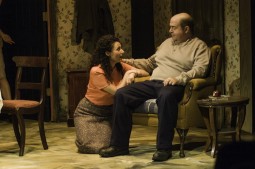 Fox is initially hard pressed to choose. “There are so many favorites I could mention. We did the workshop of [Clifford Odets’ classic] Awake and Sing! Gar directed me in [Anton Chekhov’s] Ivanov. He was always kind of my angel in everything here. I also loved acting in [Tennessee Williams’] Orpheus Descending.”
Fox is initially hard pressed to choose. “There are so many favorites I could mention. We did the workshop of [Clifford Odets’ classic] Awake and Sing! Gar directed me in [Anton Chekhov’s] Ivanov. He was always kind of my angel in everything here. I also loved acting in [Tennessee Williams’] Orpheus Descending.”
She continues, “We often did wonderful things that people didn’t see. In our workshops, magical things have happened. We did a play called Mother’s Day, years ago, which was wonderful. It was kind of I Love Lucy meets Long Day’s Journey into Night. I’m not kidding. For years I tried to find the writer [Mark Donnelly], because he’s brilliant. I just got an email from him, and right before he contacted me, I got an email from someone saying ‘remember that play from 20 years ago.’ Then there are the plays that Oliver Goldstick wrote. I loved working on anything with Gar, such as on Anna Christie. We co-directed Playboy of the Western World and Golden Boy. It’s all an embarrassment of riches.”
Holding Down the Fort
What are the challenges of keeping the company vital in the face of economic challenges and dwindling press outlets? According to Fox, “I feel the concern has to be in continuing the way of working that we hope always to live up to, because that is why we keep doing this. Hopefully in doing that kind of work, we have enough protection for our audience and our friends who treasure the theater. We want to have a circle surrounding theater that is not only appreciative of that work but that also is philanthropic. We’re lucky that we have that, and I hope to massage and hone it more. We spend a lot of time here focusing on the work. And lots of times, as we all know, building an audience while focusing on running the business is a delicate balance. I just want to make sure that we are practicing our due diligence in protecting our theater as well.”
She believes that the balance continues to work: “We see younger people coming. I teach at UCLA, so we’re doing Suburbia in the Co-op right now, and seven of the kids on that stage were sophomores with me. So those kids are coming in, and bringing in a different kind of audiences here. Then people can flourish, like Dana here, who was a student and has become an artist in her own right.”
Jackson comments on the influence of the press: “You see situations where you might get wonderful reviews and don’t sell tickets, and sometimes you don’t get a good review and sell lots of tickets. It doesn’t always relate. If you are creating something that will have some kind of an impact, people will come. Time is limited. If you get people to get in their car, come down here, and spend 2-3 hours and pay, you have to give them something that’s worth their time and energy. So that’s the only thing I try to think about when I’m doing something — focus on quality and maintain it.”
Melissa Weber Bales and Vince Melocchi
Fox adds, “We received more letters from the Barrie plays than probably anything we’ve done because people were so moved by it. You have to do things from your heart. We have this reputation of doing lesser known plays of great playwrights but we have been doing a lot of new plays too. New play development is a difficult and complex.”
She points out that Melocchi wrote Lions, which premiered at PRT in 2009. It was published by Samuel French, and Melocchi was nominated for an Ovation Award. It had almost a year-long run between the workshop and the full production, Fox says. ”Then with his play Julia, we moved it to New York, so he’s been one of the members here who really has started to have a strong reputation as a writer. We have a pretty serious playwriting group here. We have an unusual situation where you actually develop a play and go from staged readings to doing a workshop, and see what you’ve got. It’s nice to be able to share the great writers with another generation.”
She adds another observation: “We’ve been in existence for so long, it’s unusual for a group of people to stay together so long.” Out of about 25 starting members, nine are still active, she says. ”I think our theater is unusual in that most membership companies don’t have a venue that allows the actors to be completely autonomous in the workshops. And also an artistic director with a vision for the theater. That’s a wonderful thing.”
A View From the Bridge, Pacific Resident Theatre, 703 Venice Blvd., Venice 90291. Thu-Sat 8 pm. Sun 3 pm. Dark July 4. Tickets: $20-28. www.pacificresidenttheatre.com. 310-822-8392.
**All A View From the Bridge production photos by Vitor Martins.


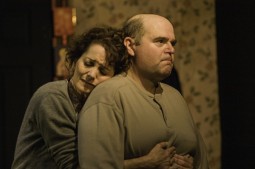
0 comments on “Fox and Jackson Jointly View Their Venice Bridge by Les Spindle | July 1, 2013”